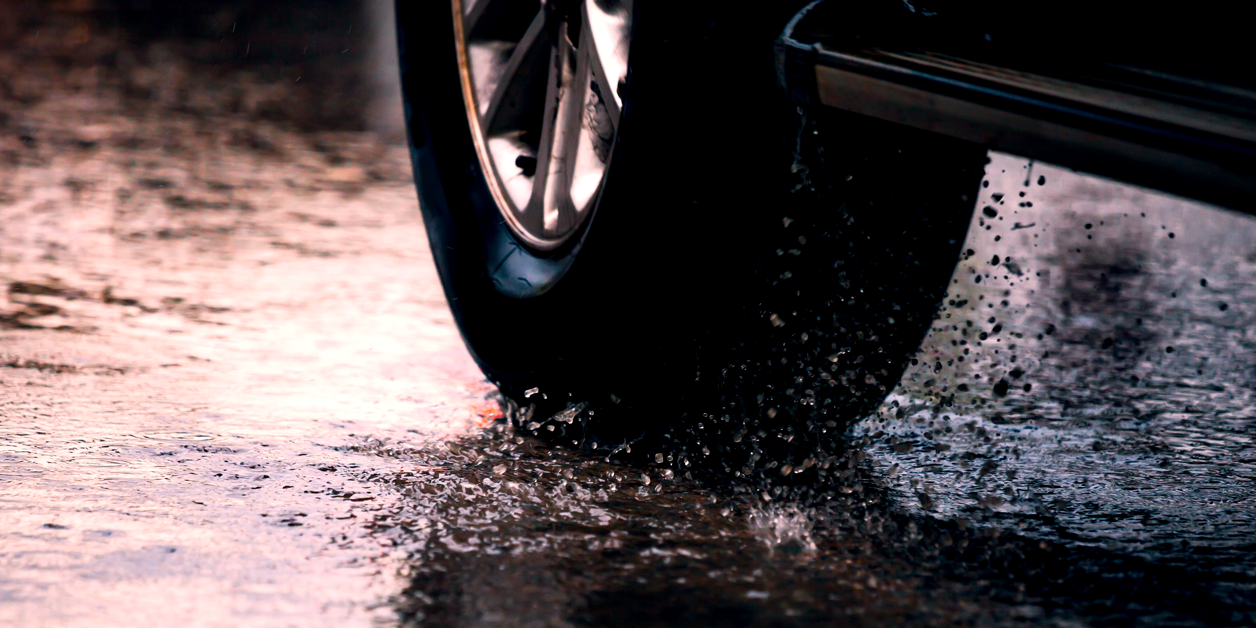Tires with good tread depth are critical to driver safety. When in good condition, properly maintained, and the correct type and size, tires enable a vehicle to accelerate, steer, and brake safely under a variety of road and weather conditions. While worn tires are reasonably effective in dry conditions, new research from AAA shows the dangers of driving on worn tires on rain-soaked roads.
Driving on relatively worn tires at highway speeds in wet conditions can increase average stopping distances by nearly 90 feet – more than the length of a semi – when compared to new tires. With nearly 800,000 crashes occurring on wet roads each year, it’s important to make sure your tires are safe. Be sure to check the tread depth of your tires, replace tires proactively, and increase following distances significantly during rainy conditions, along with these other tips to keep you and others safe on the roads:
- Do the quarter test. Test your tread depth by placing a quarter upside down in the tread of a tire; if the top of Washington’s head can be seen, the tires need to be replaced. Begin shopping for new tires when the tread depth of your current tires reaches 4/32”.
- Check them monthly. Keep tires properly inflated, rotate them on a regular basis, and inspect them at least once a month.
- Performance over price. When shopping for replacement tires, remember that price alone is not a good indicator of better performance. Research prospective tire models through consumer reviews, and to understand tire ratings.
- Increase following distance. In rainy conditions, increase your following distance to allow for ample space if the vehicle ahead suddenly stops, which will give you time to stop, too.
- Avoid cruise control. Avoid the use of cruise control when navigating rain-soaked roads in order to respond quickly if the car loses traction with the road. If your vehicle begins to hydroplane on wet roads, gently ease off the accelerator and steer in the direction the vehicle should go until traction is regained. Do not brake forcefully, as this can cause the vehicle to skid.
For more information on tires and tread depth, read the full AAA Tire Research Report, and how to prepare for winter weather.


